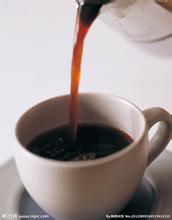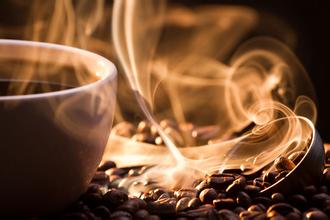Description of Flavor of Yunnan small Grain Coffee Iron pickup Coffee introduction to the taste of fine coffee beans in producing areas
Yunnan can be said to be the only province still growing Arabica on a large scale, mainly in Dehong Lincang, Baoshan, western Yunnan and Pu'er Banna in southern Yunnan. Robusta was the main coffee introduced by missionaries in the 19th century, and then it was no longer planted on a large scale. Experts assisted by the Soviet Union brought two mainstream Arabica varieties, typica and Bourbon bourbon, to Baoshan, Yunnan, for cultivation and promotion, which were well received. Later, due to the special period, scientific research and cultivation tended to stagnate. After the reform and opening up, thanks to the efforts of local agricultural experts, the iron pickup varieties cultivated by Baoshan state-run Lujiang Farm and Xincheng Youth Farm also won the first place in the international coffee competition. However, the Chinese people's understanding of coffee, so that we do not increase too much interest in growing. Since the early 1990s, in order to improve the enthusiasm of farmers, Baoshan Rezuo has introduced a Katim variety bred by the Portuguese Coffee Rust Research Center with Timor (medium grain, Tim) and Caturra (small grain, Kaddura), and has been popularized and planted with numerous titles. This variety has solved many factors such as disease and insect disasters and drought resistance, and the important thing is that the yield per mu has nearly doubled. Although it has increased the enthusiasm of farmers to grow coffee, it has also become the reason for the low quality of Yunnan coffee from now on. At the same time, Nestl é and Maxwell entered China and began to promote coffee varieties suitable for instant coffee in Pu'er and other places: S288, natural hybrid of large seed and small seed and S26 of kent hybrid of Arabica Kent in India, which had first-class rust resistance, but with low planting difficulty and adaptability, it basically stopped planting at the beginning of the 20th century.
Typica and Bourbon, two classic high-quality coffee varieties, are the main coffee varieties in Yunnan. In 1991, Katimo Catimor series varieties were introduced from Kenya (with stronger anti-virus ability and higher yield). A variety of Arabian species (also known as small seed species). Because the morphology and habits of the two varieties are similar, the two varieties are mostly mixed.
Tibica coffee, native to Ethiopia and southeastern Sudan, is the most widely cultivated variety of coffee in the Western Hemisphere. The plant is stronger, but not light-tolerant, and the yield is higher in Hawaii. The top leaf of Tibika is red and copper, which is called red top coffee.
Bourbon coffee is a variety of small-grain coffee second only to Tibica. At first, the main branch and the trunk grew upward at 45 degrees, and drooped with fruit load, the lateral branches were denser, the fruit was more, and the yield was higher. But the berries are smaller and ripen more slowly. The top bud of Bobang is green, which is called green top coffee.
Catimor is an improved variety of Tiebika species, with 25% Robusta gene. More than 100 years ago, Zhu Kula called "Ruokelai" (Yi language), which means curved mountain road. In 1892, due to the arrival of the French missionary Father Tian, he combined the essence of Yi language with the romance of the French, so the name Zhu Kula came into being, and later generations translated it as "heaven on earth".
According to reports, in 1892, French missionary Father Tian used coffee fruit to breed the first coffee tree outside the church, and then cultivated more coffee trees and planted them around the church. Since then, the village of Zhukula began to grow coffee, and the village has been surrounded by coffee trees ever since. Qi Guanghui and Li Fusheng, the two oldest elders in the village, are both in their eighties this year, and together they have witnessed the formation of the oldest coffee forest in China.
Although Zhu Kula is poor and backward, it has an inextricable bond with coffee. In addition to growing coffee all over the country, the villagers all have a tradition of drinking coffee: self-growing, self-grinding and self-brewing, and now men, women and children in the village have the habit of drinking coffee. The villagers here have a special affection for the coffee tree. Even if the coffee beans do not bring them any economic benefits, the villagers are not willing to cut down a coffee tree.

Important Notice :
前街咖啡 FrontStreet Coffee has moved to new addredd:
FrontStreet Coffee Address: 315,Donghua East Road,GuangZhou
Tel:020 38364473
- Prev

Lively citrus citric acid sun Yega Shifeiwaka Coffee Flavor description Variety characteristics
The traditional way of tanning in Ethiopia is rough and smelly, so it is popular.
- Next

Introduction to the treatment methods of Flavor and Taste Grinding of Fine Coffee beans in Panamanian Kasha Coffee Variety area
Panama is located in the isthmus of Panama in Central America, bordered by Colombia to the east, the Pacific Ocean to the south, the map of Panama to Costa Rica to the west and the Caribbean Sea to the north. The territory is S-shaped to connect North and South America, and the Panama Canal connects the Atlantic Ocean and the Pacific Ocean from north to south. It is said that Panama is rich in mineral resources, but it is not exploited much.
Related
- Detailed explanation of Jadeite planting Land in Panamanian Jadeite Manor introduction to the grading system of Jadeite competitive bidding, Red bid, Green bid and Rose Summer
- Story of Coffee planting in Brenka region of Costa Rica Stonehenge Manor anaerobic heavy honey treatment of flavor mouth
- What's on the barrel of Blue Mountain Coffee beans?
- Can American coffee also pull flowers? How to use hot American style to pull out a good-looking pattern?
- Can you make a cold extract with coffee beans? What is the right proportion for cold-extracted coffee formula?
- Indonesian PWN Gold Mandrine Coffee Origin Features Flavor How to Chong? Mandolin coffee is American.
- A brief introduction to the flavor characteristics of Brazilian yellow bourbon coffee beans
- What is the effect of different water quality on the flavor of cold-extracted coffee? What kind of water is best for brewing coffee?
- Why do you think of Rose Summer whenever you mention Panamanian coffee?
- Introduction to the characteristics of authentic blue mountain coffee bean producing areas? What is the CIB Coffee Authority in Jamaica?

